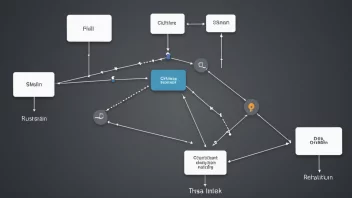Introduction
In the digital age, the integrity and security of data are paramount. Cryptographic hashing algorithms play a crucial role in ensuring data integrity, securing passwords, and enabling blockchain technology. In this article, you will learn about the fundamentals of cryptographic hashing, its applications, and a step-by-step guide on how to implement a hashing algorithm.
Step 1: Understanding Cryptographic Hashing
A cryptographic hash function is a mathematical algorithm that transforms an input (or 'message') into a fixed-size string of bytes. The output, typically a sequence of alphanumeric characters, is known as the hash value or digest. Here are some key properties of cryptographic hash functions:
- Deterministic: The same input will always produce the same hash output.
- Fast Computation: It should be quick and easy to compute the hash for any given input.
- Pre-image Resistance: Given a hash value, it should be computationally infeasible to find the original input.
- Collision Resistance: It should be hard to find two different inputs that produce the same hash output.
- Small Changes Result in Big Changes: A small change in input should produce a significantly different hash.
Step 2: Applications of Cryptographic Hashing
Cryptographic hashing algorithms are utilized in various applications, including:
- Data Integrity: Hashes can be used to verify the integrity of data during transmission. If a file is altered, its hash will change, indicating tampering.
- Password Storage: Storing passwords as hashes rather than plain text increases security.
- Blockchain Technology: Hashing is fundamental to blockchain, where it secures transaction data and maintains the integrity of the blockchain.
Step 3: Choosing a Hashing Algorithm
Several hashing algorithms are widely used today. Here are a few popular options:
- SHA-256: Part of the SHA-2 family, widely used in blockchain and security applications.
- SHA-3: The latest member of the Secure Hash Algorithm family.
- bcrypt: Designed for password hashing, it incorporates a salt to protect against rainbow table attacks.
- Argon2: An advanced password hashing algorithm that won the Password Hashing Competition.
Step 4: Implementing a Hashing Algorithm
Now, let’s walk through how to implement a hashing algorithm using Python. We will use the SHA-256 algorithm from the hashlib library.
import hashlib
def hash_string(input_string):
# Encode the string to bytes
encoded_string = input_string.encode()
# Create a hash object using SHA-256
sha256_hash = hashlib.sha256(encoded_string)
# Return the hexadecimal representation of the digest
return sha256_hash.hexdigest()
# Example usage
input_data = 'Hello, world!'
hash_value = hash_string(input_data)
print(f'The SHA-256 hash of \'{input_data}\' is: {hash_value}')
Step 5: Testing the Hash Function
To test the hash function we created, run the code in a Python environment. You should see an output similar to:
The SHA-256 hash of 'Hello, world!' is: a591a6d40bf420404a011733cfb7b190d62c65bf0bcda190e4e5b8e1c9e0c0f5
This hash will remain the same every time you input 'Hello, world!'. This consistency illustrates the deterministic nature of cryptographic hashing.
Step 6: Securing Passwords with Hashing
When storing passwords, it is essential to enhance security by incorporating a salt. Here’s how to do that:
import os
import hashlib
def hash_password(password):
# Generate a random salt
salt = os.urandom(16)
# Combine the salt and password
salted_password = salt + password.encode()
# Create a hash
password_hash = hashlib.sha256(salted_password).hexdigest()
return salt, password_hash
# Example usage
password = 'my_secure_password'
salt, hashed_password = hash_password(password)
print(f'Salt: {salt.hex()}, Hash: {hashed_password}')
In this code, a random salt is generated and combined with the password before hashing. This approach protects against precomputed attacks.
Summary
In this guide, we explored the importance of cryptographic hashing algorithms, their applications, and how to implement them in Python. We covered:
- The definition and properties of cryptographic hashing.
- Common applications such as data integrity, password storage, and blockchain technology.
- How to implement SHA-256 hashing and secure passwords using a salt.
By understanding and applying these principles, you can enhance the security and integrity of your digital data. Always choose strong algorithms and keep your implementations updated to defend against evolving cybersecurity threats.






